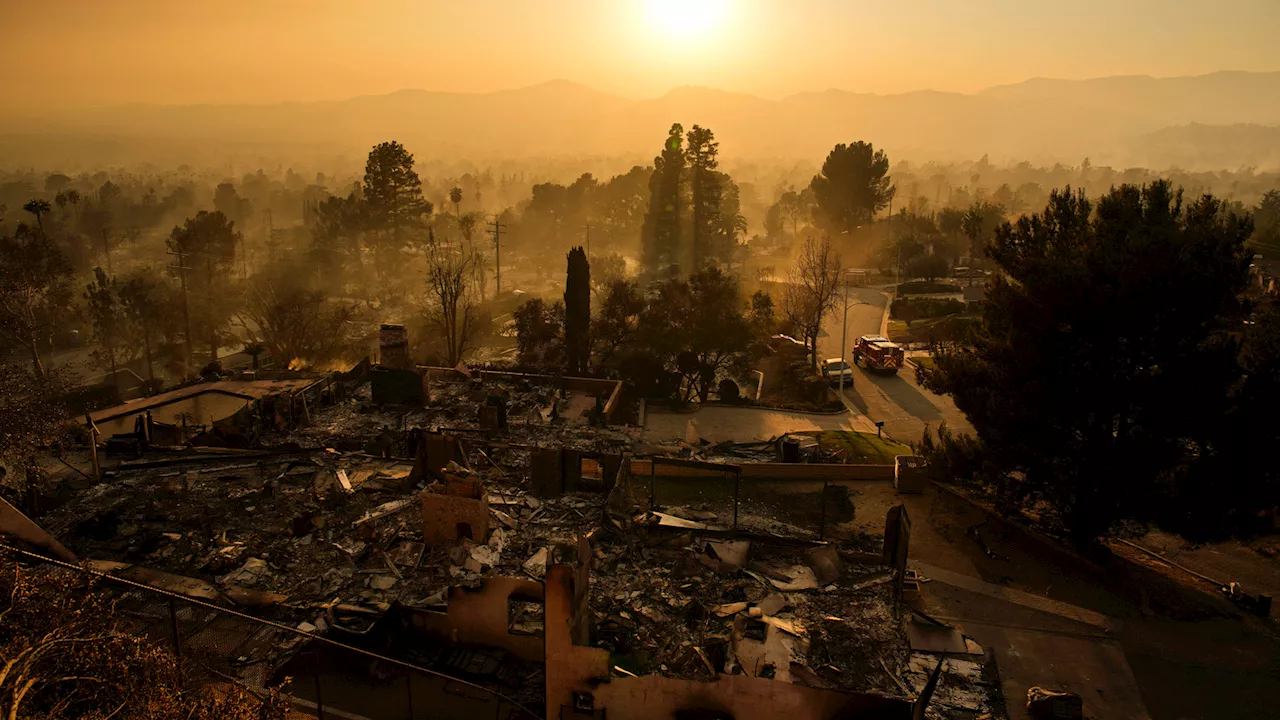The Los Angeles region is battling devastating wildfires, exacerbated by a rapid shift between wet and dry conditions known as hydroclimate whiplash. Experts link this shift to climate change and warn of increased vulnerability due to prolonged dry spells and strong winds.
Climate scientist Peter Kalmus joined ABC News to discuss the ongoing climate crisis and the devastating wildfires currently ravaging Los Angeles County. Experts believe that hydroclimate whiplash, the rapid shift between periods of intense wet and dry conditions, significantly contributed to the severity of these blazes. California has experienced a dramatic shift in recent years, moving from a prolonged drought to extended periods of above-average precipitation.
This abundance of rainfall fueled lush vegetation growth. However, a subsequent period of record-breaking heat swiftly dried out this vegetation, creating abundant fuel for large and rapidly spreading wildfires. The Los Angeles region endured two exceptionally wet winters in 2023 and 2024, followed by a dry spell that began in February. Since May 6, Los Angeles has received a mere 0.16 inches of rain, resulting in an unusually dry start to the rainy season. This lack of precipitation has dried out the vegetation that flourished during the previous wet winters, creating a tinderbox-like environment. Edith de Guzman, a water equity and adaptation policy cooperative extension specialist at the University of California, Los Angeles, explained that the shrub cover, which thrived due to the extra rainfall, later dried out, providing ample fuel for the fires. Combined with the highly flammable building materials commonly used in the region, such as wood frames, it created a recipe for disaster.The dry conditions in Southern California are also expected to persist later into the fall, increasing vulnerability during high wind events. Daniel Swain, a climate scientist at UCLA and UC Agriculture and Natural Resources, stated that climate change is amplifying the overlap between extremely dry vegetation conditions later in the season and the occurrence of these wind events. Hydroclimate variability has always been a characteristic of California's natural climate, leaving it particularly susceptible to wildfires. Among all states in the continental U.S., California experiences the highest year-to-year variability between wet and dry periods. This variability intensifies as you move further south into Southern California.Julie Kalansky, a climate scientist and deputy director of operations at the Center for Western Weather and Water Extremes at UC San Diego's Scripps Institution of Oceanography, corroborated this, noting that California's vulnerability to wildfires is further exacerbated by climate change. There is growing evidence that climate change is intensifying the volatility between extremely dry and extremely wet conditions worldwide, leading to rapid swings between devastating droughts and record-breaking precipitation events. These extreme weather oscillations amplify associated hazards and contribute to catastrophic wildfire events. Rachel Cleetus, policy director for the Climate and Energy Program at the Union of Concerned Scientists, emphasized that these hotter, drier conditions, driven by climate change, have created a tinderbox scenario. 'We have this dried-out vegetation, very dry landscapes,' she said. However, hydrovariability alone was not the sole factor behind the devastating fires. The combination of dry conditions, strong winds, and human activities created a perfect storm. Winds, particularly a powerful mountain wave event with northerly gusts ranging from 80 to 100 mph, spread the fires rapidly once they were ignited.Cold, dense air associated with a low-pressure system in the upper atmosphere moved over Baja California, further enhancing surface winds. This air was positioned at a favorable trajectory, allowing the colder air aloft to rush down toward the surface and intensify the existing winds. These surges of powerful winds swept across the Los Angeles and Ventura County Mountains, including areas not typically prone to such strong winds, like Burbank and the foothills of the Pacific Palisades. The wind direction and topography played a crucial role, as the San Gabriel Mountains interacted with the wind orientation to produce a damaging wind event that is relatively uncommon. The mountains can also create more erratic winds because additional whirls of wind, known as wind eddies, can form as air moves across the peaks and through canyons. 'They were extremely strong and fast, but they were also erratic,' de Guzman said. 'They typically are narrower and a little bit more predictable in direction.'The combination of these factors resulted in a rapid escalation of the wildfires, making it extremely challenging for firefighters to contain them
WILDFIRES CLIMATE CHANGE HYDROCLIMATE WHIPLASH SOUTHERN CALIFORNIA LOS ANGELES CALIFORNIA
United States Latest News, United States Headlines
Similar News:You can also read news stories similar to this one that we have collected from other news sources.
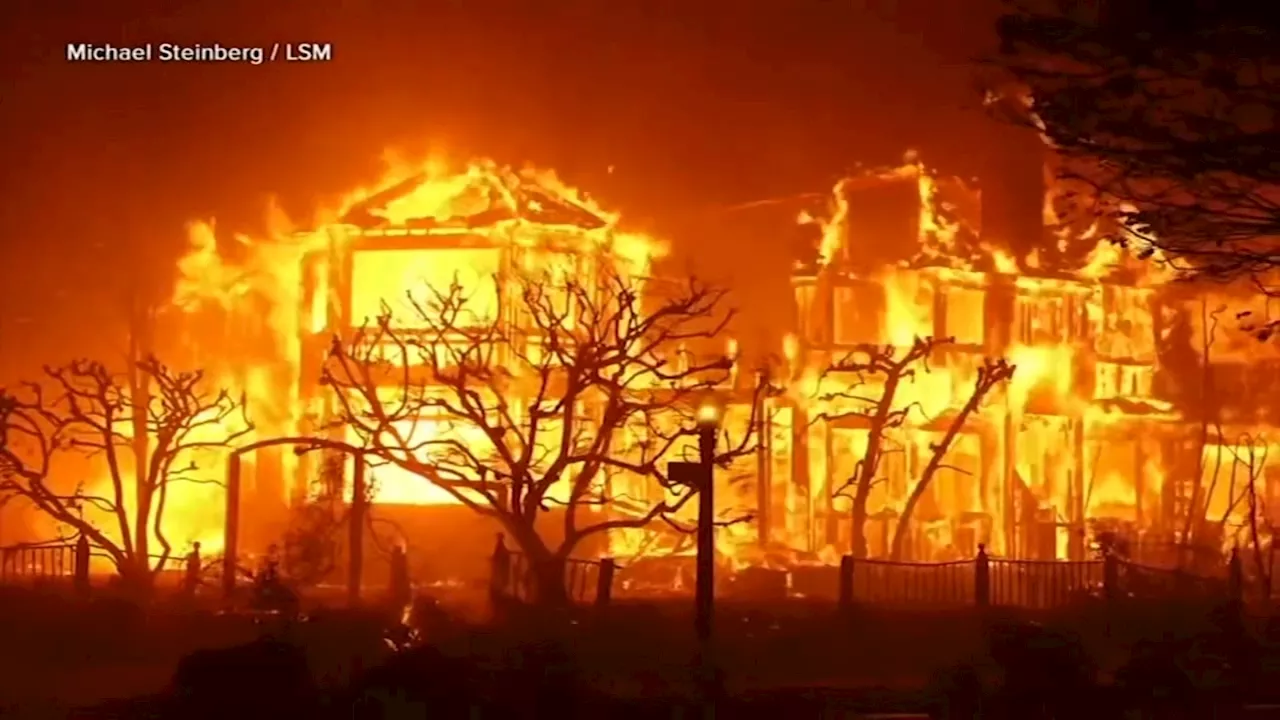 Climate Change and 'Hydroclimate Whiplash' Fuel Southern California FiresRising global temperatures contribute to extreme weather events, including historic Southern California wildfires. Experts point to climate change and the phenomenon of 'hydroclimate whiplash' as key factors. This involves rapid shifts between dry and wet periods, creating prime conditions for fires.
Climate Change and 'Hydroclimate Whiplash' Fuel Southern California FiresRising global temperatures contribute to extreme weather events, including historic Southern California wildfires. Experts point to climate change and the phenomenon of 'hydroclimate whiplash' as key factors. This involves rapid shifts between dry and wet periods, creating prime conditions for fires.
Read more »
 Floods, droughts, then fires: Hydroclimate whiplash is speeding up globallyHydroclimate whiplash -- rapid swings between intensely wet and dangerously dry weather -- has already increased globally due to climate change, with further large increases expected as warming continues, according to a team of researchers.
Floods, droughts, then fires: Hydroclimate whiplash is speeding up globallyHydroclimate whiplash -- rapid swings between intensely wet and dangerously dry weather -- has already increased globally due to climate change, with further large increases expected as warming continues, according to a team of researchers.
Read more »
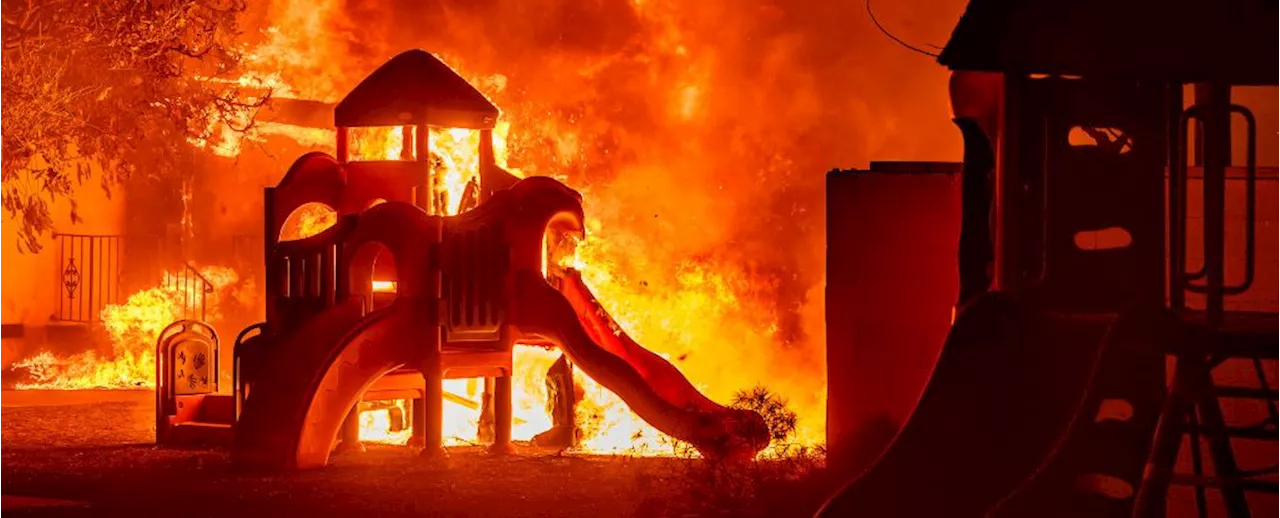 California Wildfires Highlight the Danger of 'Hydroclimate Whiplash'A new study reveals that extreme shifts between wet and dry conditions, known as 'hydroclimate whiplash', are becoming more frequent due to a warming atmosphere. This phenomenon is linked to intensified wildfires, as seen in the devastating California fires. Researchers warn that these swings in weather patterns will double in frequency as global temperatures rise, posing a significant threat to ecosystems and human lives.
California Wildfires Highlight the Danger of 'Hydroclimate Whiplash'A new study reveals that extreme shifts between wet and dry conditions, known as 'hydroclimate whiplash', are becoming more frequent due to a warming atmosphere. This phenomenon is linked to intensified wildfires, as seen in the devastating California fires. Researchers warn that these swings in weather patterns will double in frequency as global temperatures rise, posing a significant threat to ecosystems and human lives.
Read more »
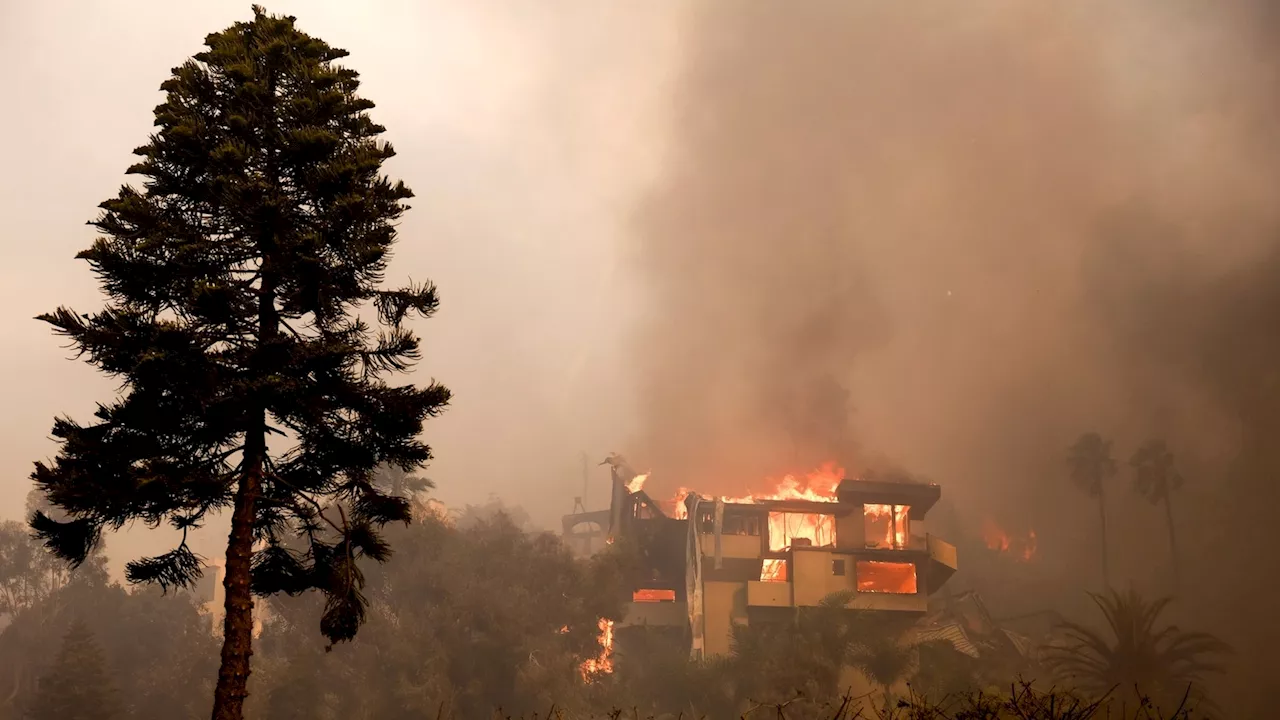 California Wildfires Fueled by Hydroclimate Whiplash and Powerful WindsA confluence of factors, including rapid shifts between wet and dry conditions and powerful winds, contributed to the severity of recent wildfires in Southern California. Experts say the region experienced two unusually wet winters followed by a prolonged dry spell, creating ideal conditions for fast-growing wildfires. Additionally, a powerful mountain wave wind event with gusts reaching 80 to 100 mph rapidly spread the flames, making the fires difficult to contain.
California Wildfires Fueled by Hydroclimate Whiplash and Powerful WindsA confluence of factors, including rapid shifts between wet and dry conditions and powerful winds, contributed to the severity of recent wildfires in Southern California. Experts say the region experienced two unusually wet winters followed by a prolonged dry spell, creating ideal conditions for fast-growing wildfires. Additionally, a powerful mountain wave wind event with gusts reaching 80 to 100 mph rapidly spread the flames, making the fires difficult to contain.
Read more »
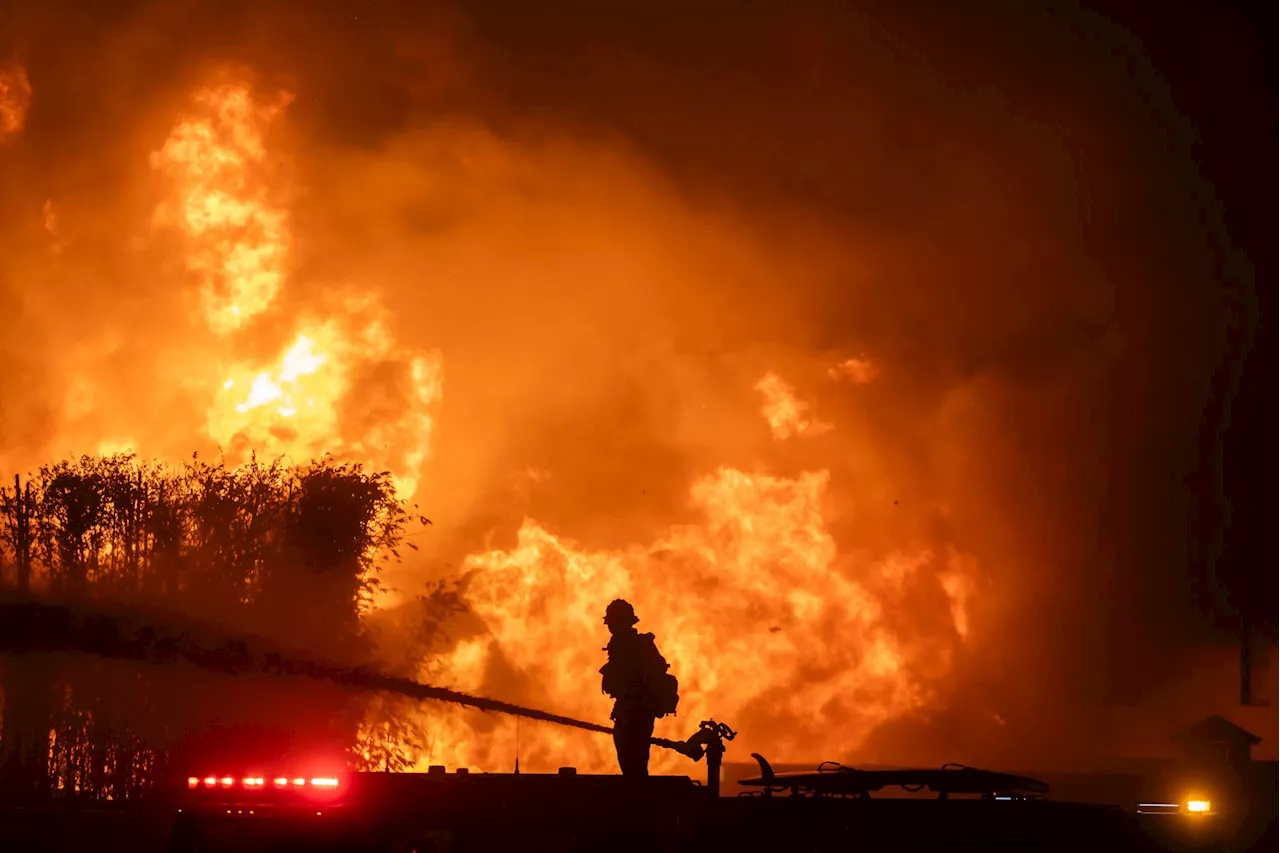 “Weather Whiplash” Fueled by Climate Change Produced Catastrophic Fires in LAFearless Independent Journalism
“Weather Whiplash” Fueled by Climate Change Produced Catastrophic Fires in LAFearless Independent Journalism
Read more »
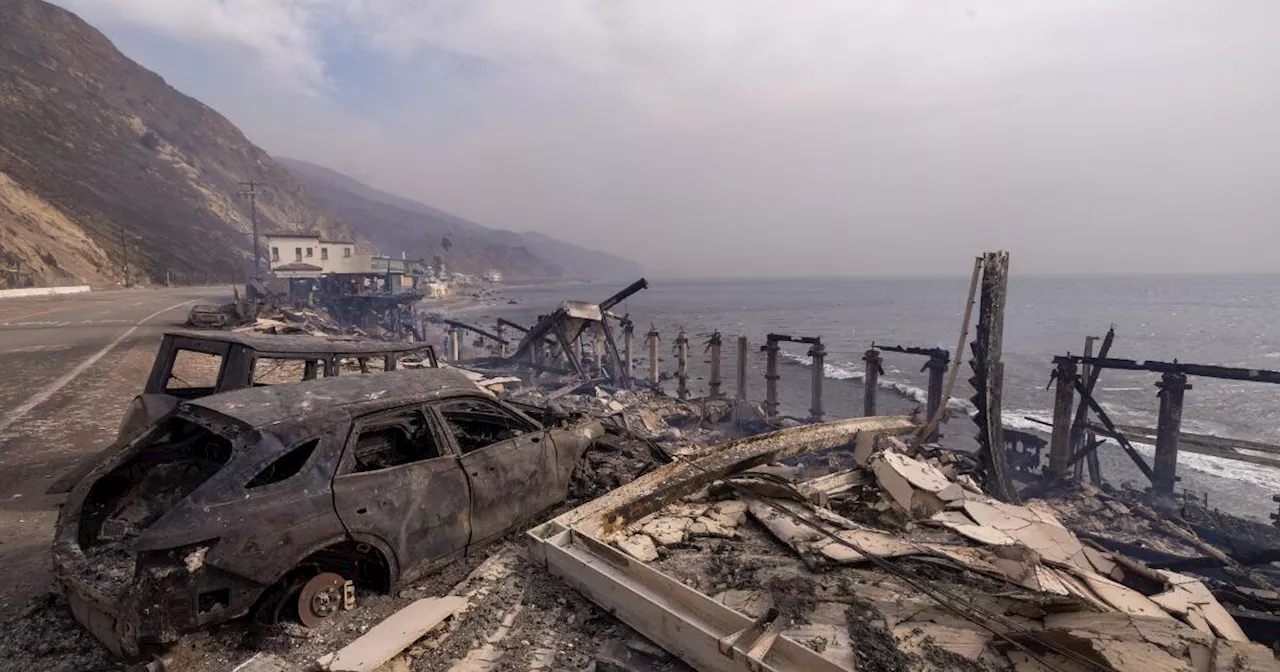 Climate Change Fuels Extreme Weather Swings, Increasing Wildfire RiskScientists warn that human-caused climate change is leading to more frequent and intense shifts between wet and dry weather, a phenomenon known as hydroclimate whiplash. This trend increases the risk of wildfires, flooding, and other hazards. The study, published in Nature Reviews Earth & Environment, found that hydroclimate whiplash events have already grown by 31% to 66% since the mid-1900s and are projected to more than double in a scenario where global warming reaches 3 degrees Celsius.
Climate Change Fuels Extreme Weather Swings, Increasing Wildfire RiskScientists warn that human-caused climate change is leading to more frequent and intense shifts between wet and dry weather, a phenomenon known as hydroclimate whiplash. This trend increases the risk of wildfires, flooding, and other hazards. The study, published in Nature Reviews Earth & Environment, found that hydroclimate whiplash events have already grown by 31% to 66% since the mid-1900s and are projected to more than double in a scenario where global warming reaches 3 degrees Celsius.
Read more »
